Gold, plot and cinema in the Stone Wedding
The “Stone Wedding” invites us to contemplate human beings in spaces of life and death - in short, to witness cinema in its purest form.
With a soundtrack worthy of a standalone release to listen to in moments of emotional excess, with sculptural imagery signed by Iosif Demian, and a rhythm that is both solemn and vivid, the “Stone Wedding” (1973, dir. Mircea Veroiu, Dan Pița) invites us tonight to contemplate human beings in spaces of life and death—in short, to witness cinema in its purest form. Another reason why we chose to show it tonight is the recent passing of the much-regretted actor Mircea Diaconu, who makes his debut here in a leading role in a feature film.
Released shortly after “Water Like a Black Buffalo” (1970, dir. multiple authors), the cinematic manifesto of the ’80s generation, the “Stone Wedding” picks up the promise made by the tragic documentary and carries it into the realm of fiction. It is composed of two chapters (two medium-length films, actually) adaptations of Ion Agârbiceanu’s stories. The first one, “Fefeleaga”, follows the fate of a widowed woman, left on earth with too little time to grieve and too much time to labor for basic needs. The second one, “At a Wedding” is about a Transylvanian wedding where love, social duty, and freedom intertwine with the quiet, confident violence of village life.
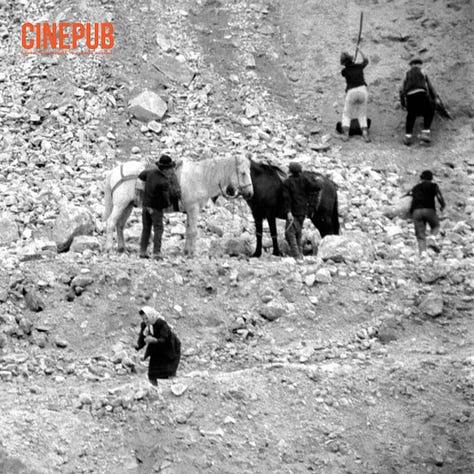
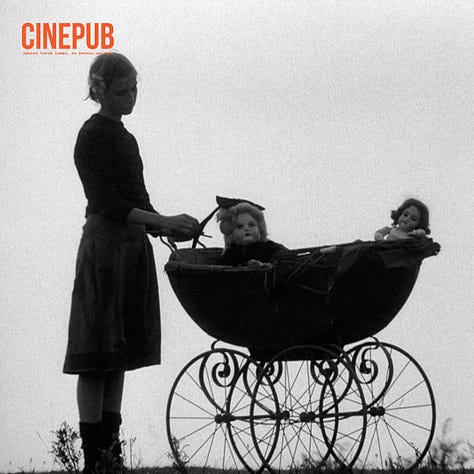
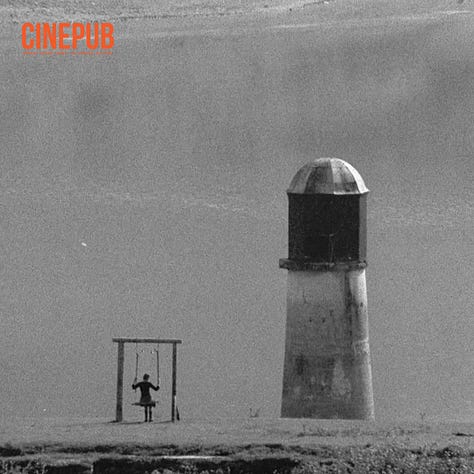
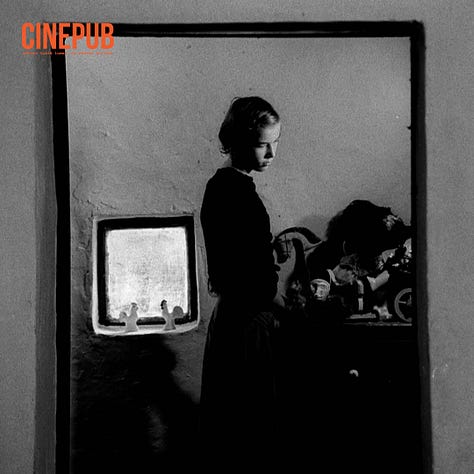
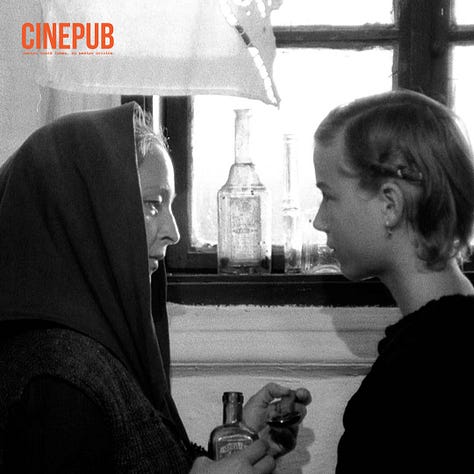
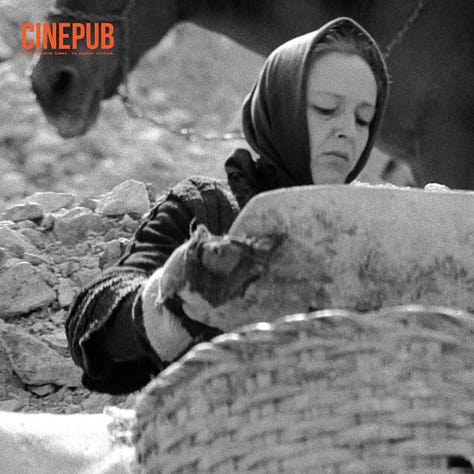
The first chapter begins with a title card suggesting a dichotomy of gold: on one hand, a precious metal signifying the wealth of the rich; on the other, a product of the toil of the many. An explicitly socialist idea. Interestingly, the film chooses not to narratively conceptualize this dialectic, thus breaking a fundamental principle of dramatic writing. And so, if it violates the principles of dramatic writing, why do we call it an excellent film?
Some of the reasons are clear. We are dealing with captivating black-and-white imagery, featuring subtle camera movements, shots exploring depth of field, and carefully constructed compositions (e.g., those filmed with long focal lengths, capturing flattened landscapes in which Leopoldina Bălănuță’s character is lost in the oppressive two-dimensionality of the space). Its rhythm is sober, allowing free associations with films like those directed by Béla Tarr (via Tarkovsky): saturated black-and-white, raw and austere rural landscapes, and characters living their destinies not stifled but seemingly absorbed by the context—see “Sátántangó”, “The Turin Horse” (2011), and others.
The Transylvanian rural space, with its Germanic air—far more elevated aesthetically and culturally than the Balkan or Slavic one — also contributes to the film’s visual richness. As does the medium-length format, which some consider the perfect duration for cinema: a length that generally covers about one act and, due to its simultaneously immersive yet non-exhaustive quality, almost never risks alienating its audience.
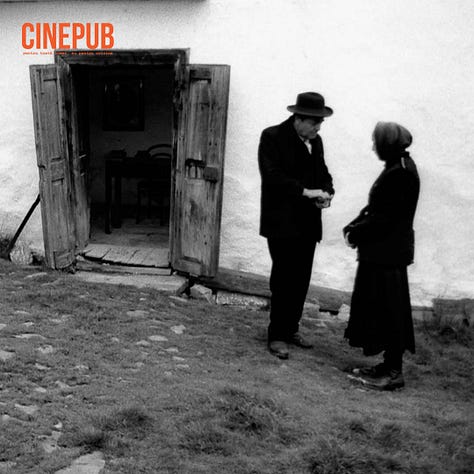
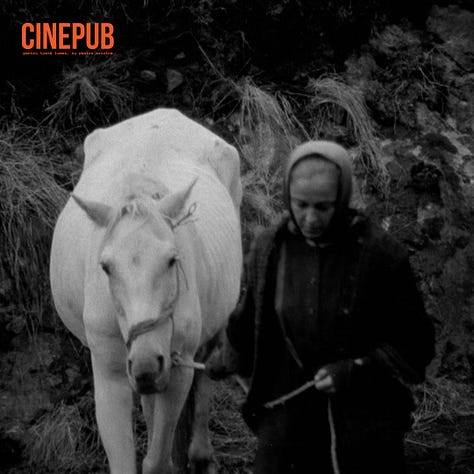
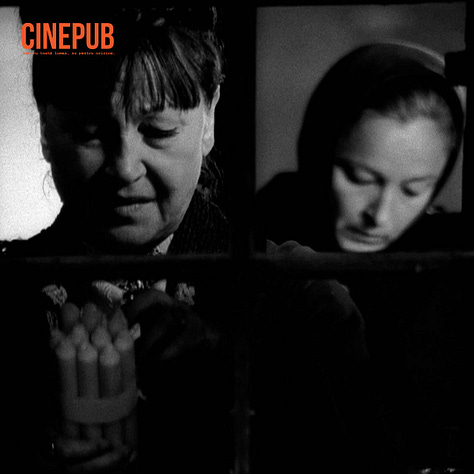
But the imagery is not merely decorative. It is also used to fill in where the dramaturgy is sparse. I am particularly referring to the frame in which the widowed woman exits the store where she had previously purchased handkerchiefs for memorial services — a space we already know as spectators. The first time, she stops around the neatly arranged handkerchiefs, hanging beautifully from a wrought iron necklace. The second time we see her there, the camera carefully frames the hanging doll (previously shown), foreshadowing the death of her daughter, whom we find lying cold on a bench in the next shot.
The second fragment, directed by Dan Pița, follows the journey of a deserter, played vibrantly by the late actor Mircea Diaconu, who teams up with a musician (Radu Boruzescu) and ends up performing together at a wedding, where Boruzescu’s character—handsome and melancholic like Bob Dylan—attracts the bride’s attention. This segment is even more surprising than the first due to its density. Pița delivers a playful approach here, free of the silliness sometimes seen in his later feature films, such as “The Contest” (1982). The somber image and the rhythm it imposes ensure that the playfulness in the shots—a trademark of his films—feels fresh and not farcical.
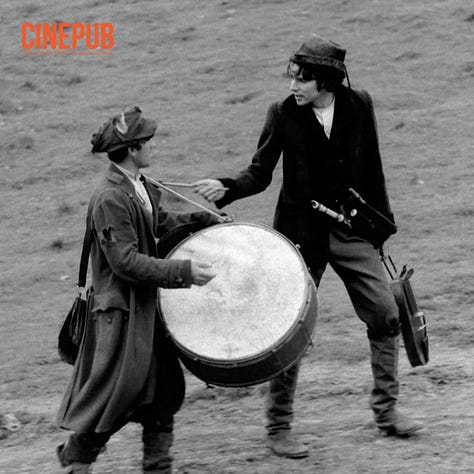
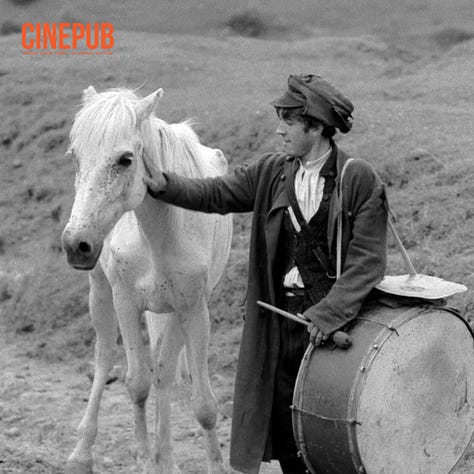
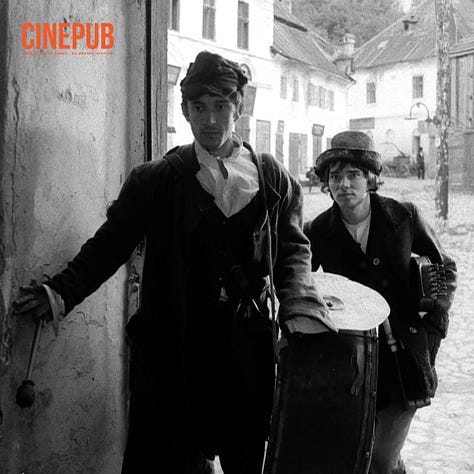
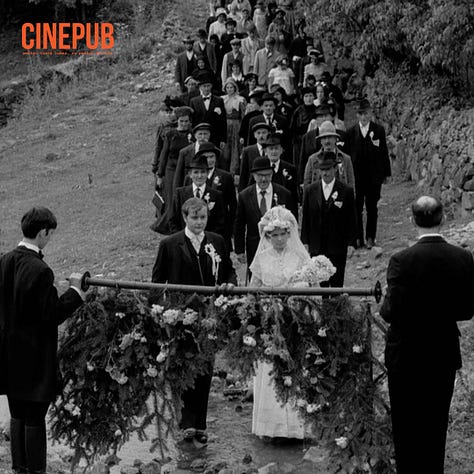
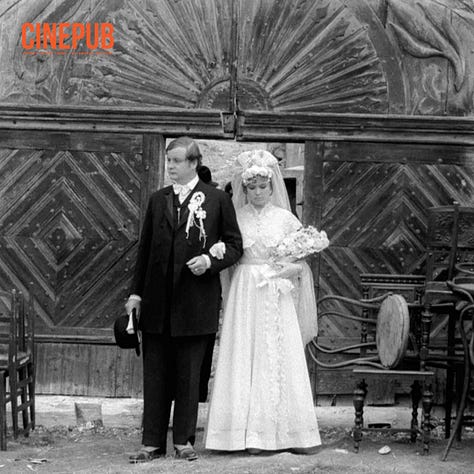
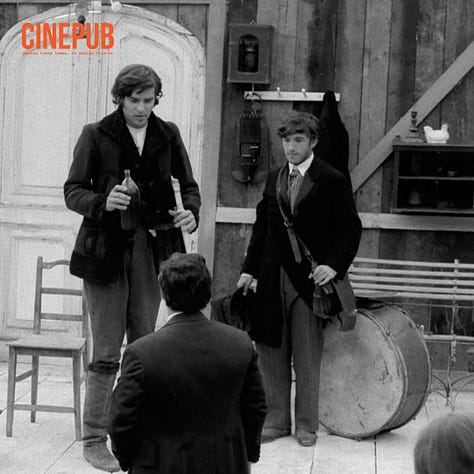
The common points between the two fragments (locations, characters, atmosphere) invite fantasy: the fantasy of other chapters created in the same spirit, which could have formed a kind of “Decalogue” like that of Krzysztof Kieślowski— say ten stories from a Transylvanian village. Attempts at serialization in pre-1989 Romanian cinema exist; the most famous is the “B.D.” series, the hajduk movies, and others. However, it was rare for a production of high cinematic value to be serialized in Romania before ’89—an aspect worth investigating.
The fragment directed by Dan Pița feels much more accomplished in the sense that it knows how to better utilize dramatic language than the first one, which relies on an atmosphere it does not allow to unfold naturally, instead overcompensating extradiegetically. The second fragment keeps you genuinely invested in a gripping story. It is captivating from the start: from the very first shots you understand the tension; then we see the journey (it’s a mini road movie), the initial conflict hides and resurfaces when the horse-mounted soldiers arrive at the wedding. It’s full of obstacles, laid out effectively and smoothly, working without oversaturation.
The first fragment slips slightly into music-video language: it has austerity, tension, aesthetics and pain, but it tries so hard to amplify the emotions, especially through extradiegetic or tautological elements, that it overflows, preventing spectators from genuine feeling. In contrast, the second fragment’s sense of thrill, danger, and excitement is faultlessly present. This, we say with a small sigh, comes from the plot. The question is: why couldn’t we treat death with the same natural spirit as we treat life? You get the idea.
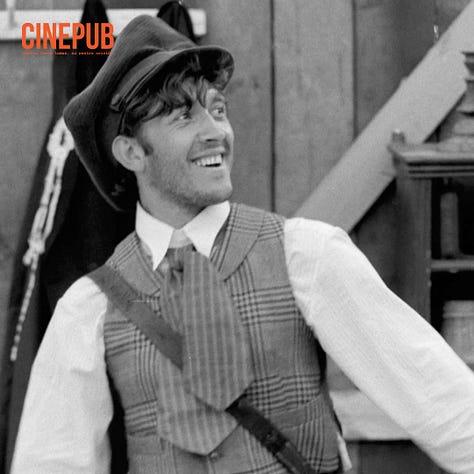
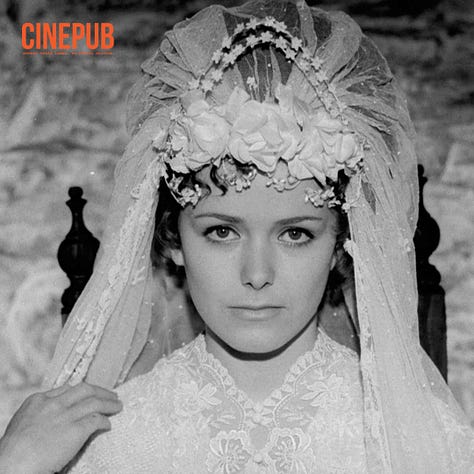
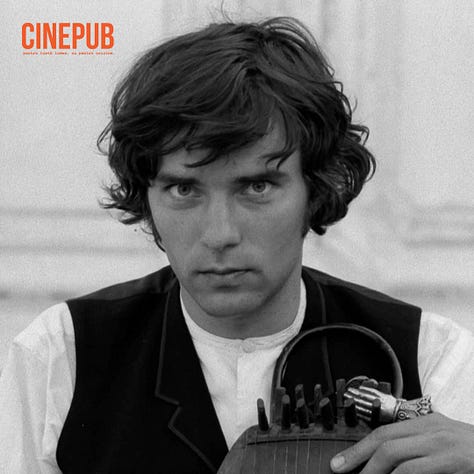
The shot with the characters of Boruzescu and Diaconu beginning to perform on stage is marvelous. Boruzescu is sumptuous: he removes his jacket, sits on a chair, rolls up his trousers, cradles what seems to be a kind of violin, and gazes in bewilderment at Diaconu, who has never played before but who radiates confidence. Diaconu beats the drum—it doesn’t sound great, but it’s okay. The melody continues; Diaconu’s character is filled with zeal, he gets up from his chair and simultaneously, as if by a cinematic miracle, the sun shines brightly on them, and Diaconu smiles at it, realizing that “cut” will probably be called. He keeps playing for a few more moments, and then we cut — likely because the direct sunlight, appearing unpredictably, would overexpose the film. We switch to a two-shot of the bride and groom. This delicious detail, emphasizing Diaconu’s naturalness in playing a kind of jester-deserter, is a true cinematic moment.
Almost like a joke for today’s artists afraid AI will replace them, right after the first dance, a man enters the yard carrying a gramophone. He sets it on stage under the curious and skeptical gazes of everyone, cranks it a bit, and lets the music play. The punchline being that, in the moment that everyone gathers around the device to admire it, Boruzescu’s character manages to approach the bride who was eyeing him up. Win some, lose some.
(Emil Vasilache, cinepub.ro)
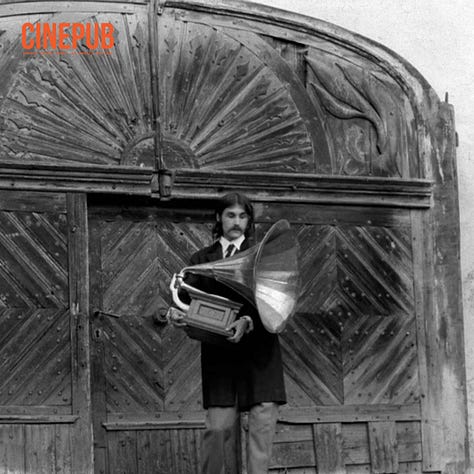
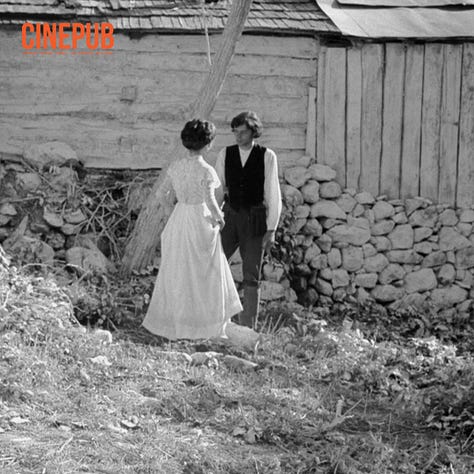
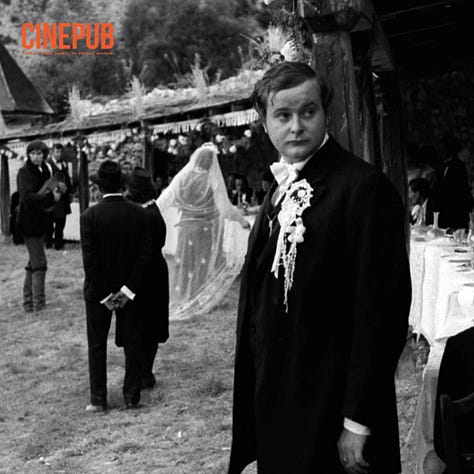
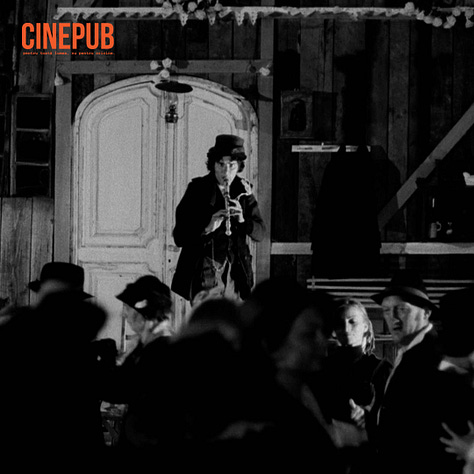
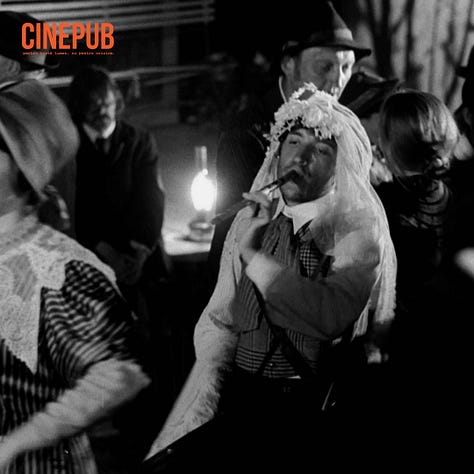
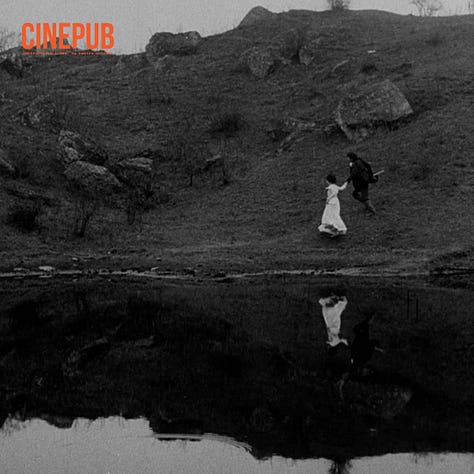
This week's premiere: Stone Wedding by Mircea Veroiu and Dan Pița, Thursday, 19 december 2024, at 9:00 p.m, on CINEPUB.RO
Cinepub is the one and only, legally operating and free of charge, AVoD platform, dedicated to the Romanian cinema: independent, contemporary, or classic. Our comittment to remain “free” means hundreds of monthly hours of volunteer work of a (very) small team of passionate individuals.
Your donation can help us cover some of the costs of securing some distribution rights, covering the basic costs or just keeping the platform updated; in a nutshell, to survive! If you like what we do, if you read what we write, if you watch the films we show, consider supporting us. We need your help. Thank you!





